Exercise 14.1 : Solutions of Questions on Page Number : 268
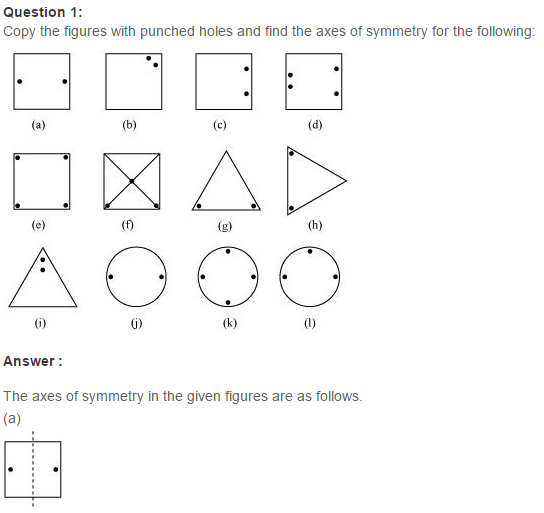
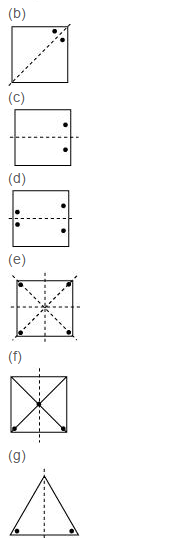
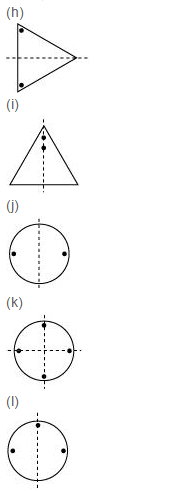
NCERT Solutions for Class 7 Maths Chapter 14 – Symmetry
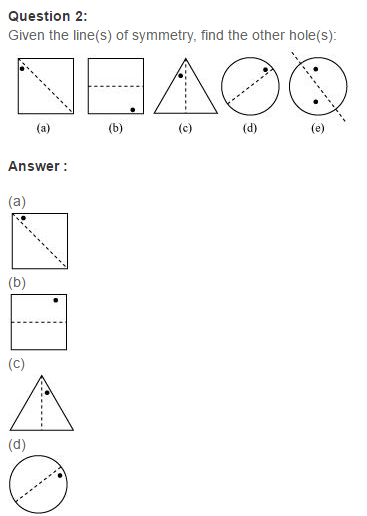

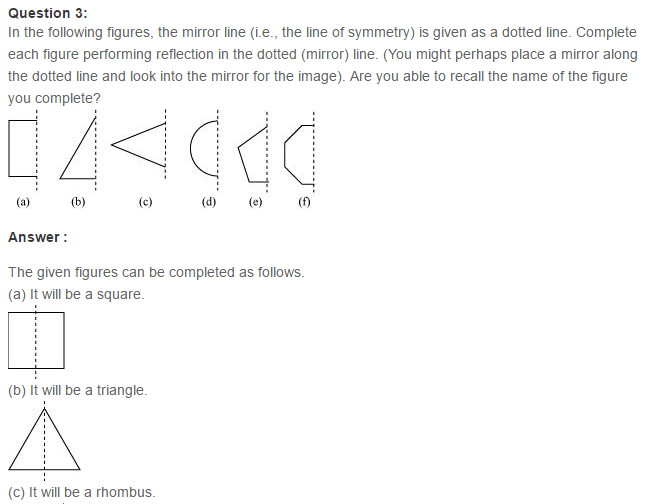
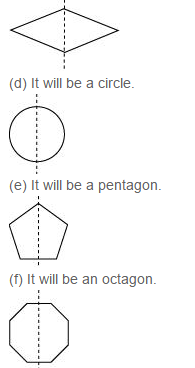
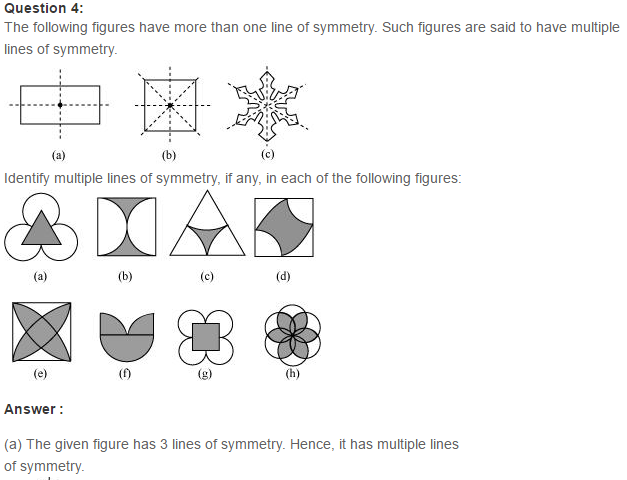
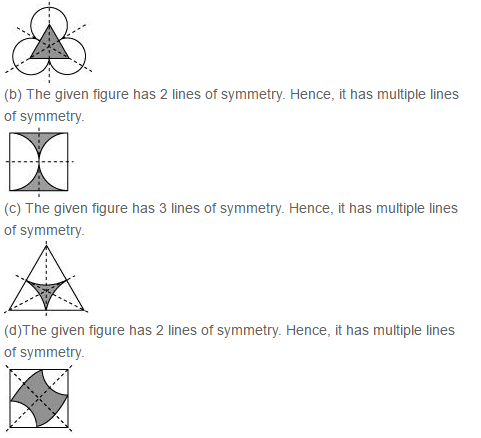
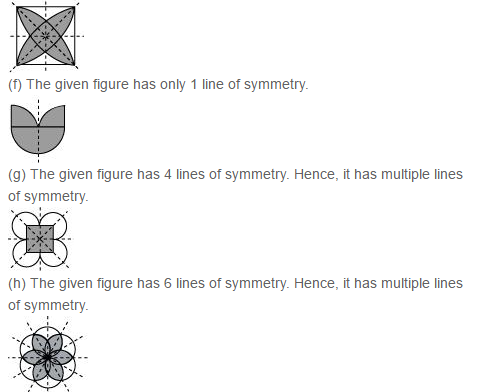
Question 5 :
Copy the figure given here.

Take any one diagonal as a line of symmetry and shade a few more squares to make the figure symmetric about a diagonal. Is there more than one way to do that? Will the figure be symmetric about both the diagonals?
Answer :
We can shade a few more squares so as to make the given figure symmetric about any of its diagonals.
Yes, the figure is symmetric about both the diagonals. There is more than one way so as to make the figure symmetric about a diagonal as we can choose any of its 2 diagonals.


Question 7 :
State the number of lines of symmetry for the following figures:
(a) An equilateral triangle
(b) An isosceles triangle
(c) A scalene triangle
(d) A square
(e) A rectangle
(f) A rhombus
(g) A parallelogram
(h) A quadrilateral
(i) A regular hexagon
(j) A circle
Answer :
(a) There are 3 lines of symmetry in an equilateral triangle.

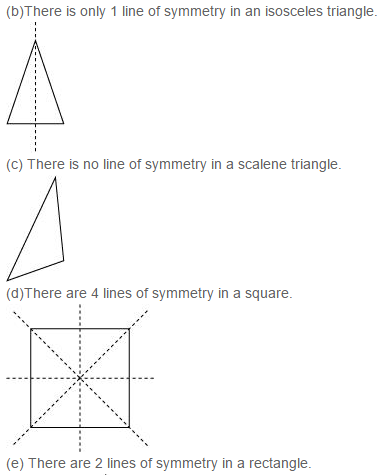
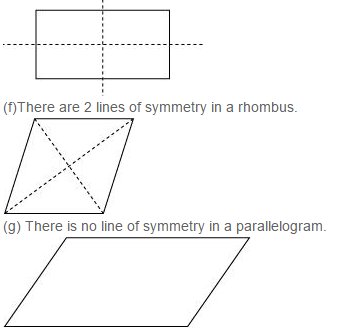
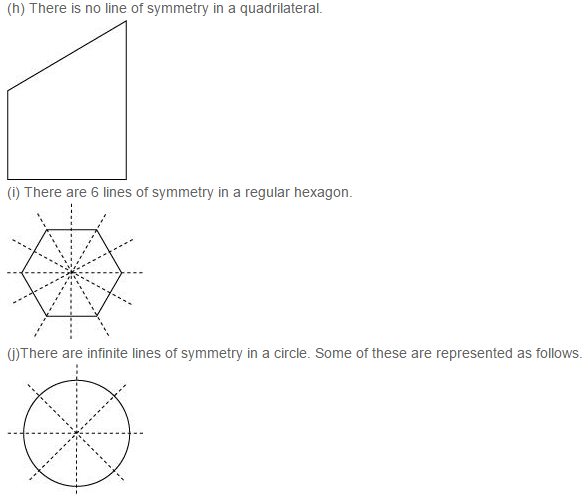
Q8 : What letters of the English alphabet have reflectional symmetry (i.e., symmetry related to mirror reflection) about.
(a) a vertical mirror
(b) a horizontal mirror
(c) both horizontal and vertical mirrors
Answer :
(a) A, H, I, M, O, T, U, V, W, X, Y are the letters having a reflectional
symmetry about a vertical mirror.
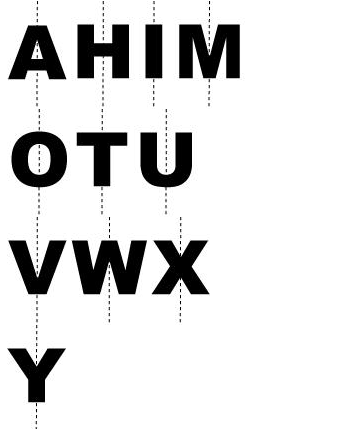
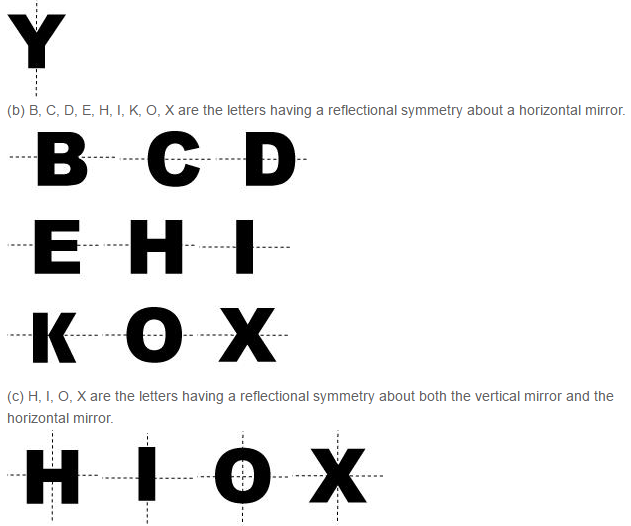
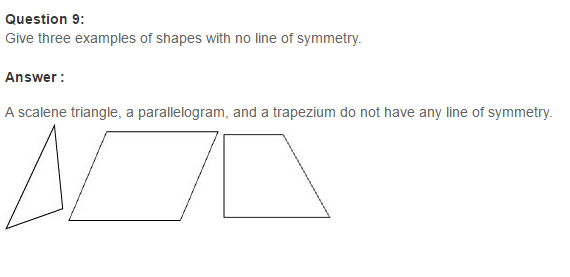
Question 10 :
What other name can you give to the line of symmetry of
(a) an isosceles triangle?
(b)a circle?
Answer :
(a) An isosceles triangle has only 1 line of symmetry.

Therefore, this line of symmetry is the median and also the altitude of this isosceles triangle.
(b) There are infinite lines of symmetry in a circle. Some of these are represented as follows.

It can be concluded that each line of symmetry is the diameter for this circle.
Exercise 14.2 : Solutions of Questions on Page Number : 274
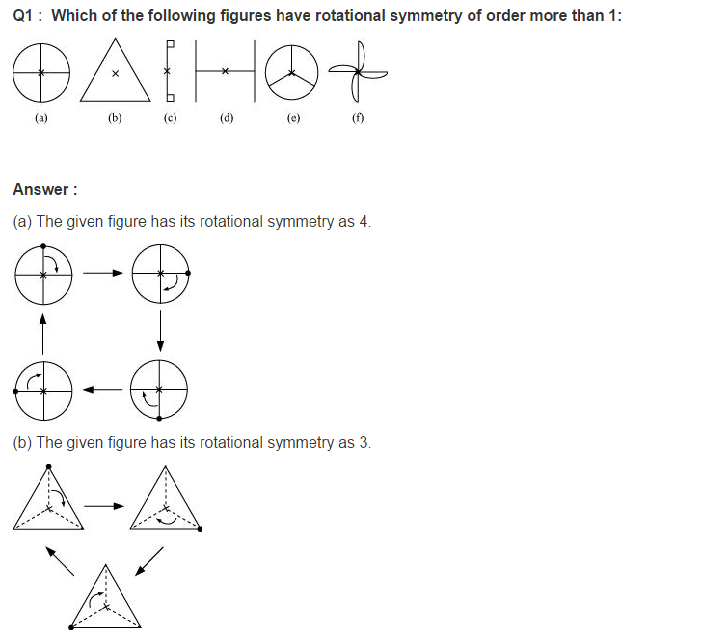
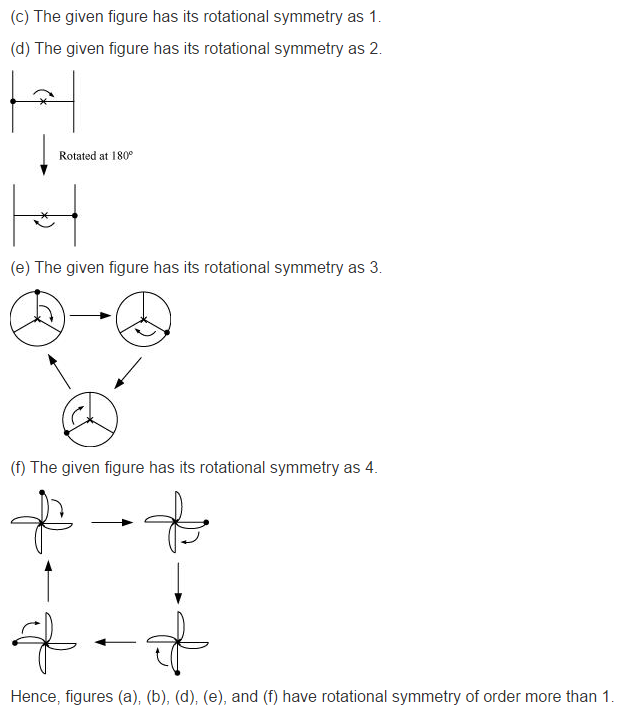
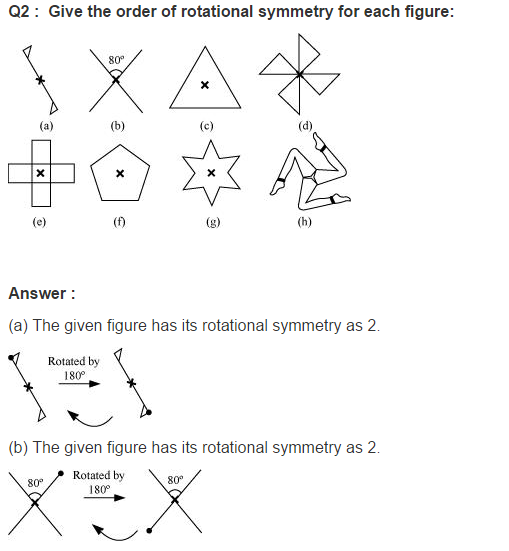
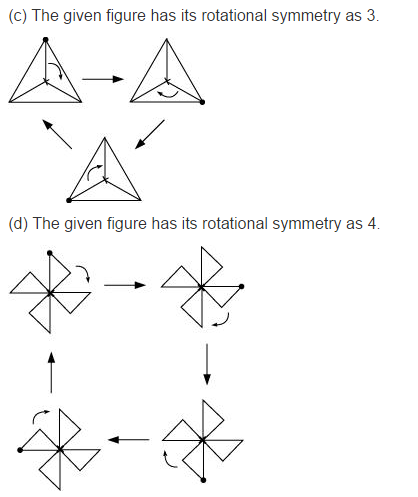
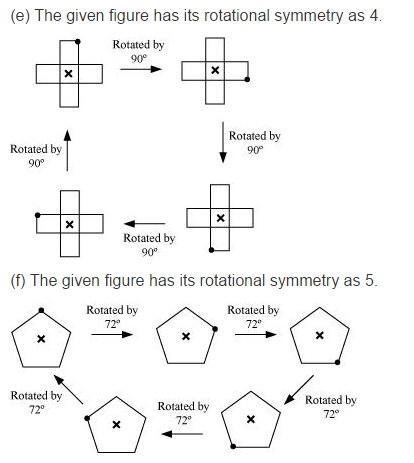
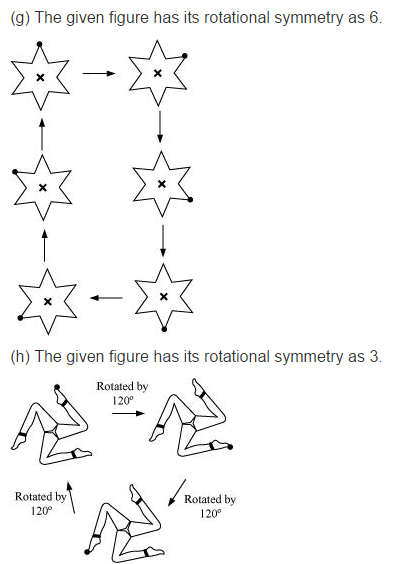
Exercise 14.3 : Solutions of Questions on Page Number : 275
Q1 : Name any two figures that have both line symmetry and rotational symmetry.
Answer :
Equilateral triangle and regular hexagon have both line of symmetry and rotational symmetry.
Question 2 :
Draw, wherever possible, a rough sketch of
(i) a triangle with both line and rotational symmetries of order more than 1.
(ii) a triangle with only line symmetry and no rotational symmetry of order more than 1.
(iii) a quadrilateral with a rotational symmetry of order more than 1 but not a line symmetry.
(iv) a quadrilateral with line symmetry but not a rotational symmetry of order more than 1.
(i) Equilateral triangle has 3 lines of symmetry and rotational symmetry of
order 3.


(ii) Isosceles triangle has only 1 line of symmetry and no rotational symmetry of order more than 1.
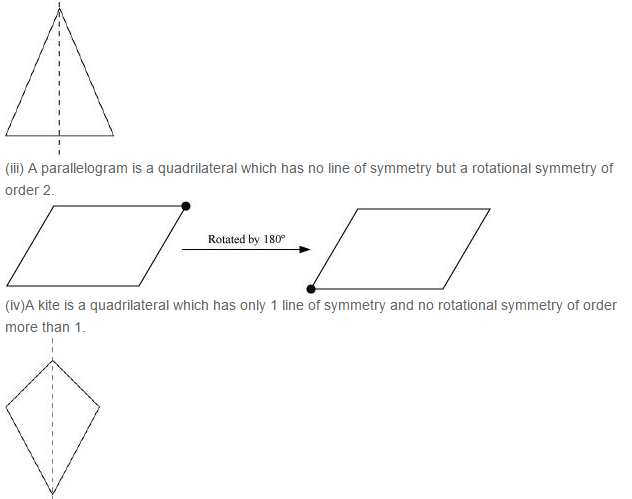
Q3 : If a figure has two or more lines of symmetry, should it have rotational symmetry of order more than 1?
Answer :
Yes. If a figure has two or more lines of symmetry, then it will definitely have its rotational symmetry of order more than 1.
Question No 1 :
Fill In the Blanks :
| Shape | Centre of Rotation | Order of Rotation | Angle of Rotation |
|---|---|---|---|
| Square | ……… | ……… | ……… |
| Rectangle | ……… | ……… | ……… |
| Rhombus | ……… | ……… | ……… |
| Equilateral Triangle | ……… | ……… | ……… |
| Regular Hexagon | ……… | ……… | ……… |
| Circle | ……… | ……… | ……… |
| Semi-circle | ……… | ……… | ……… |
Answer 4 :
The given table can be completed as follows.
| Shape | Centre of Rotation | Order of Rotation | Angle of Rotation |
|---|---|---|---|
| Square | Intersection point of diagonals | 4 | 90º |
| Rectangle | Intersection point of diagonals | 2 | 180º |
| Rhombus | Intersection point of diagonals | 2 | 180º |
| Equilateral Triangle | Intersection point of diagonals | 3 | 120º |
| Regular Hexagon | Intersection point of diagonals | 6 | 60º |
| Circle | Centre | Infinite | Any Angle |
| Semi-circle | Centre | 1 | 360º |
Q5 : Name the quadrilaterals which have both line and rotational symmetry of order more than 1.
Answer :
Square, rectangle, and rhombus are the quadrilaterals which have both line and rotational symmetry of order more than 1. A square has 4 lines of symmetry and rotational symmetry of order 4. A rectangle has 2 lines of symmetry and rotational symmetry of order 2. A rhombus has 2 lines of symmetry and rotational symmetry of order 2.
Q6 : After rotating by 60° about a centre, a figure looks exactly the same as its original position. At what other angles will this happen for the figure?
Answer :
It can be observed that if a figure looks symmetrical on rotating by 60º, then it will also look symmetrical on rotating by 120º, 180º, 240º, 300º, and 360º i.e., further multiples of 60º.
Q7 : Can we have a rotational symmetry of order more than 1 whose angle of rotation is
(i) 45°?
(ii) 17°?
Answer :
It can be observed that if the angle of rotation of a figure is a factor of 360º, then it will have a rotational symmetry of order more than 1.
It can be checked that 45º is a factor of 360º but 17º is not. Therefore, the figure having its angle of rotation as 45º will have its rotational symmetry of order more than 1. However, the figure having its angle of rotation as 17º will not be having its rotational symmetry of order more than 1.